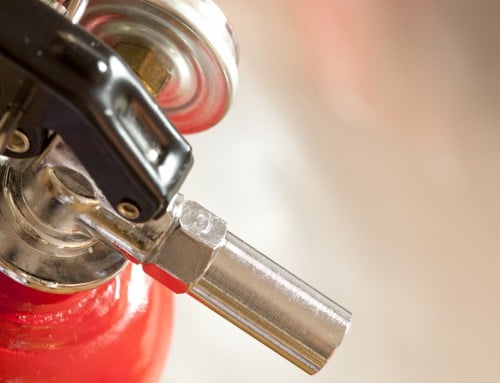Protecting your business against break-ins and theft is a top concern for any business owner. In fact, organized retail crime costs Canadians around $5 billion a year, according to the Retail Council of Canada (RCC).
And while Hollywood movies may portray alarm systems as useless against thieves who can dodge laser beams and rappel down air ducts, security measures are actually very effective tools in the real world.
Alarms can be helpful in discouraging thieves from committing a crime and promptly warning security teams about attempted break-ins or intruders on the premises. That’s why it’s important for any business owner to know the basics about alarm systems, so they’re aware of the options available to them, and are able to make an informed decision on the best alarm system for their business.
The basics
All systems include some form of sensor, control unit, and reporting device. Once a sensor detects an intruder, it feeds data to a control unit. The control unit then communicates with a reporting device such as a siren or bell, or it reaches out to a receiving unit in a remote location.
How do sensors work?
Intruders can be detected by sensors in many different ways. For instance, area protection devices use photoelectric, sound, or motion detectors to spot an intruder’s movements. Meanwhile, perimeter protection devices watch over a perimeter defined by a fence or a building’s walls. Ultrasonic motion detectors monitor sound frequencies, while passive infrared designs watch for the infrared energy that radiates off an intruder’s body. Movements can also be tracked using microwave motion detectors.
Alarms can also be triggered when someone crosses a photoelectric detector’s beam of invisible light, when someone creates a disturbance in an area with a vibration system, or even when they make a noise picked up by the microphones in a sound-based system.
For those looking to secure a safe or metal vault, a capacitance detection system might be the right choice, as it sounds an alarm if someone touches the metal surface. For particularly valuable items, you might opt for an object protection device, which can monitor the surrounding space using pressure mats, contact switches, or detectors that track vibrations, sound, smoke, or heat.
The weakest points in any perimeter will include doors, windows, or other natural openings. These areas can be monitored by magnetic contact switches, which have two main components that must stay in contact or close proximity to each other when the sensor is armed. When the door or window is opened, the two parts of the mechanism are separated, and the alarm signal is sent.
Glass breakage sensors are used to detect the sound of breaking glass. They can also detect sudden shock waves of a breaking object, such as glass or a door being kicked in. In this case, it is the shock wave of the breaking glass, not the sound itself, that is being detected. And even if a burglar manages to step through an opening like a door or window, they might trigger the electromechanical switch in a pressure mat or pass across the wired electrical barrier of a burglar “screen.” Normally, the most common detection devices used are motion sensors, door contact, and glass breakage sensors.
Monitored vs. unmonitored alarm systems
Ultimately, the level of protection your business has will vary depending on how much is being watched.
It will also vary depending on whether you have a monitored or unmonitored alarm system. A monitored system notifies a third party when the alarm is activated, who in turn notifies authorities of a burglary or trespasser. It is possible to circumvent monitored alarm systems by cutting the telephone wires before entering the premises. But “line security” can be added to your system. For instance, cellular back up can be used. That way, if the phone line is tampered with, the alarm system will still communicate with the monitoring station wirelessly via a cellular connection.
A monitored system can also have an audible delay, to give the monitoring station time to notify the police in anticipation of catching the criminals on the premises. Most systems are monitored, rather than unmonitored.
An unmonitored system only sounds an alarm on the premises, it doesn’t send a notification out to a third party. It relies on neighbours or passers-by to call the police, which they may or may not do. While it does not incur monitoring fees, an unmonitored system is the less effective choice of the two options.
Stay vigilant
While an alarm system is meant to detect a break-in, it won’t necessarily prevent one. The systems should always be installed along with proper physical security reinforcement, such as deadbolt locks, adequate lighting, secure basement windows, and strong exterior doors.
And should all that fail despite your best efforts, it’s important to have the appropriate insurance coverage for your business. To find out more about how Federated can help protect your business, visit our business insurance page today!
This blog is provided for information only and is not a substitute for professional advice. We make no representations or warranties regarding the accuracy or completeness of the information and will not be responsible for any loss arising out of reliance on the information.






